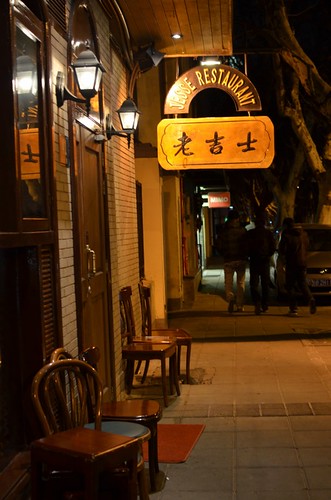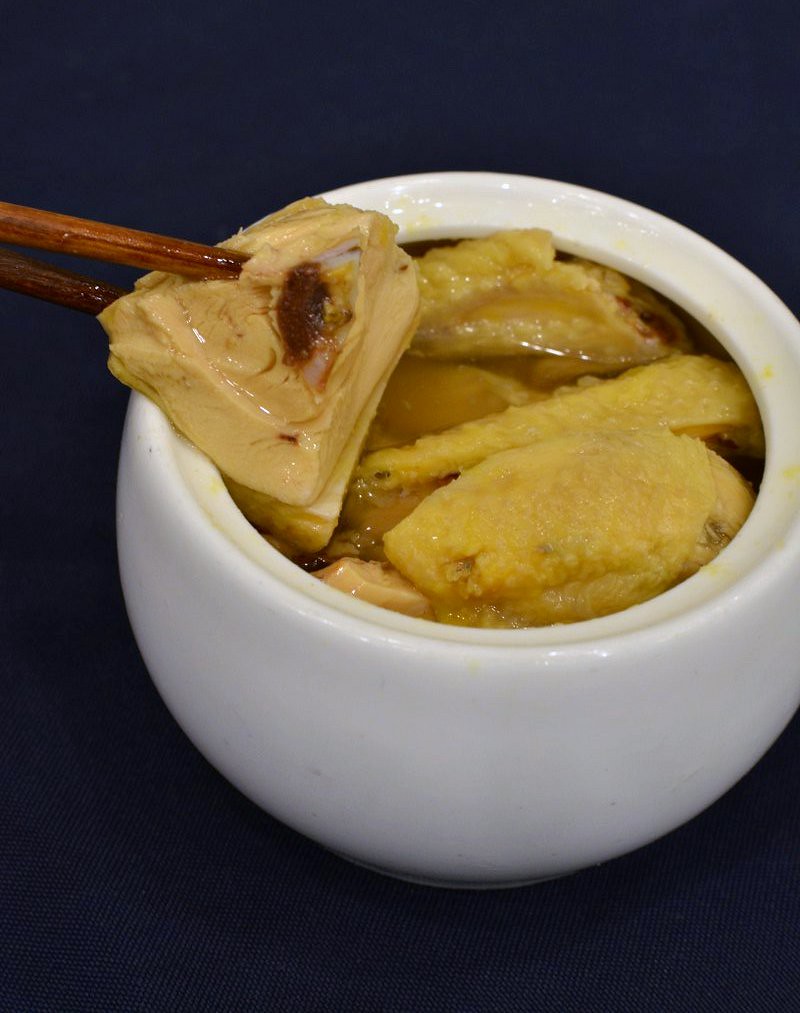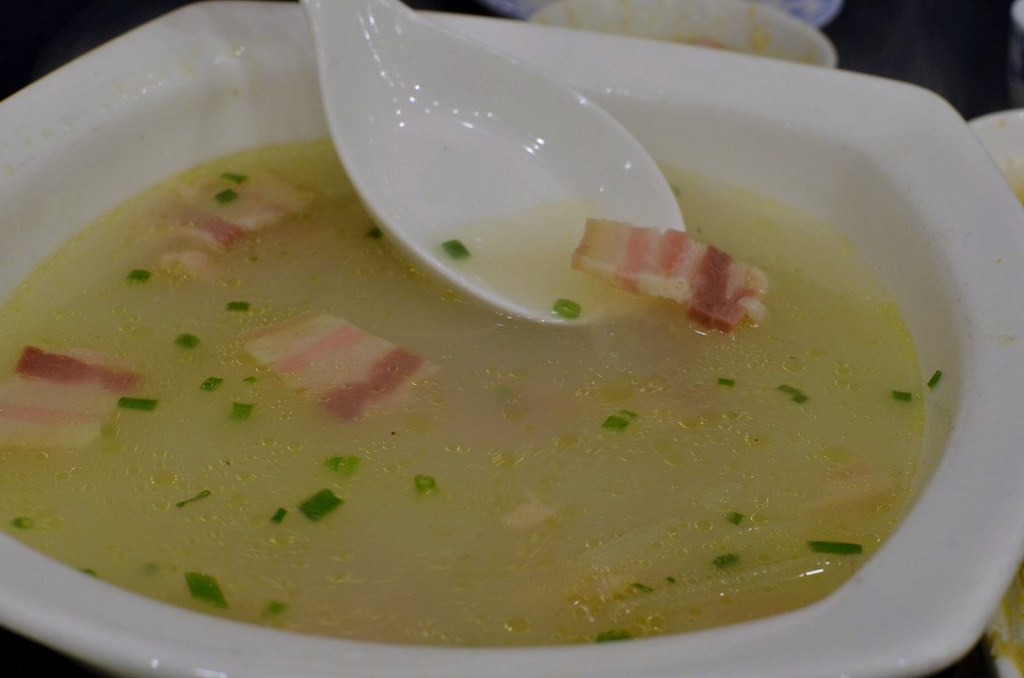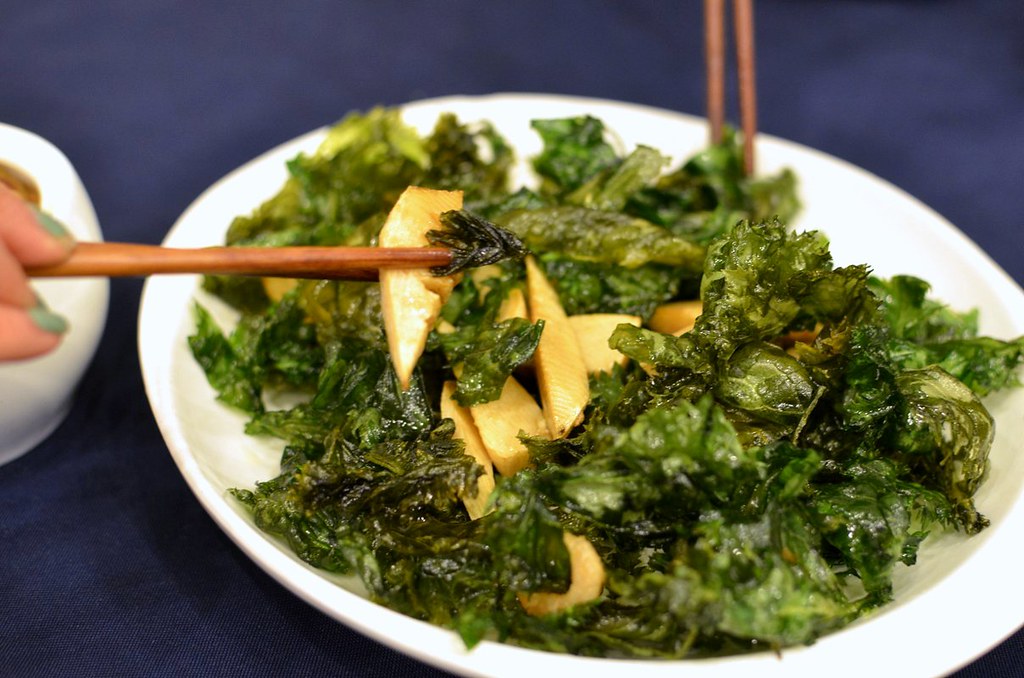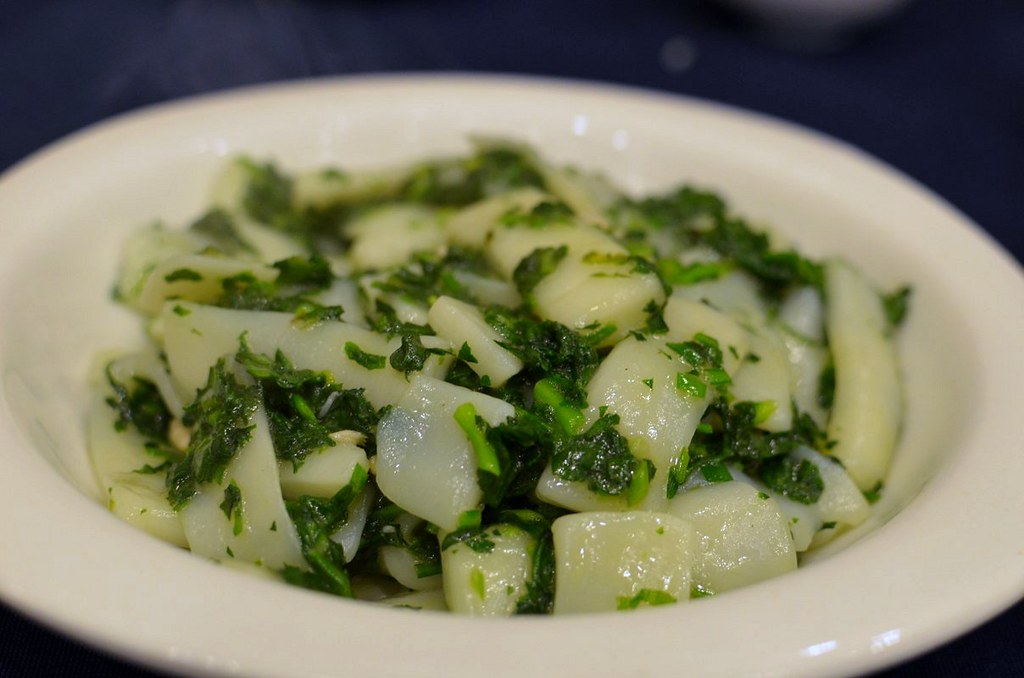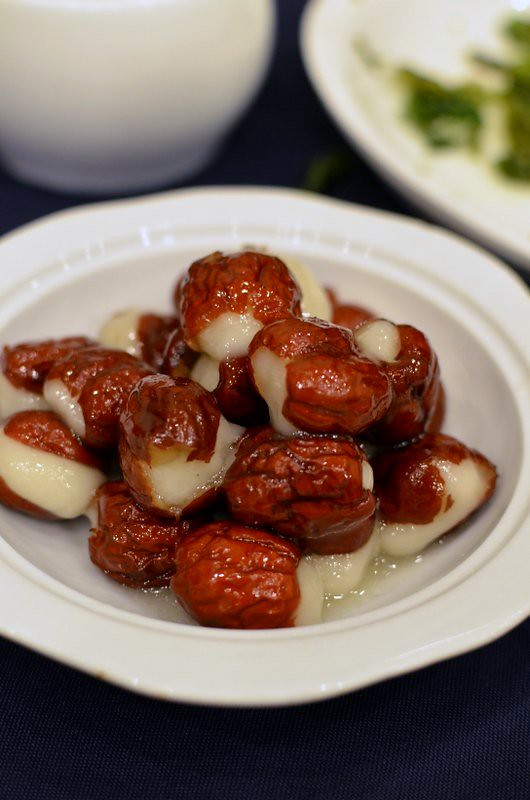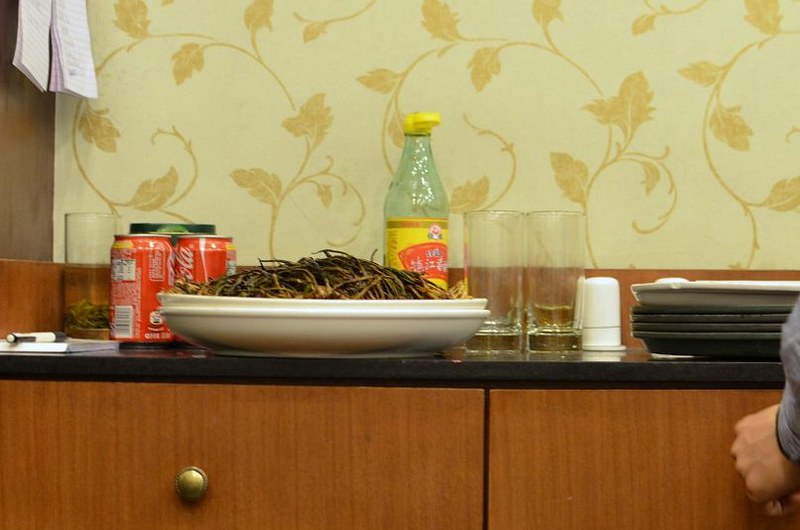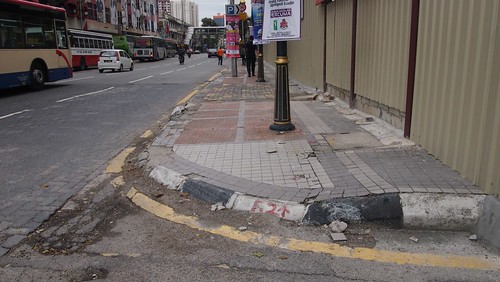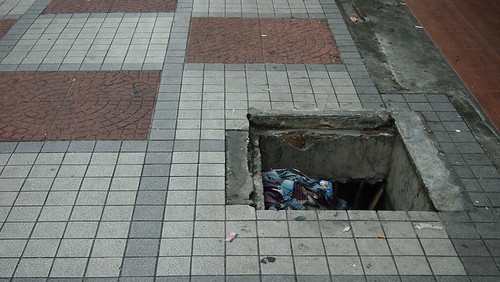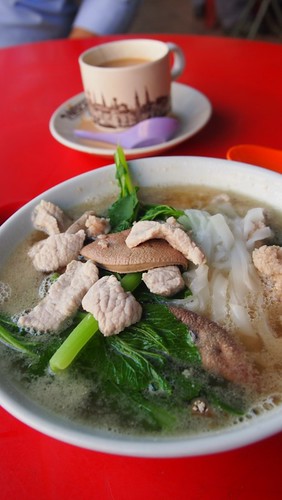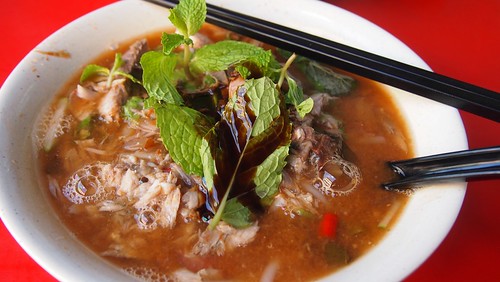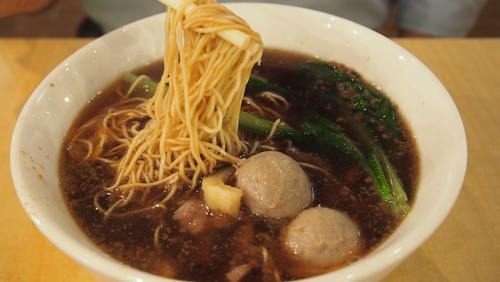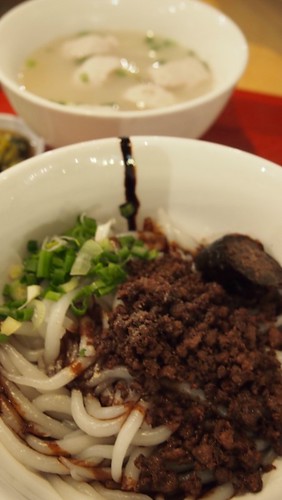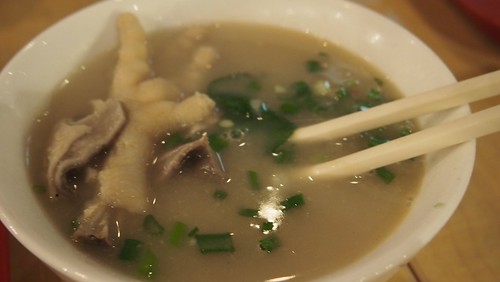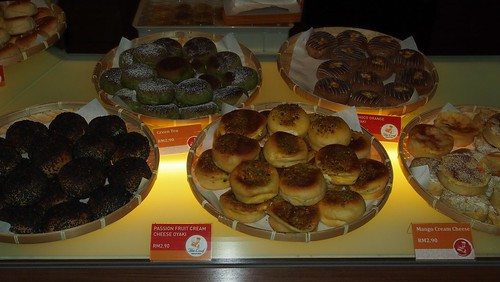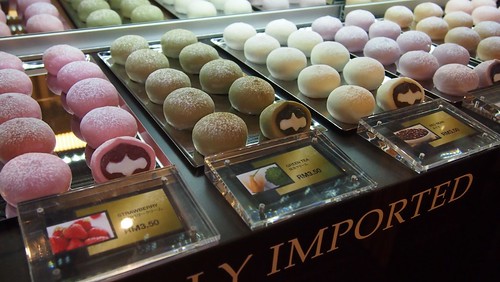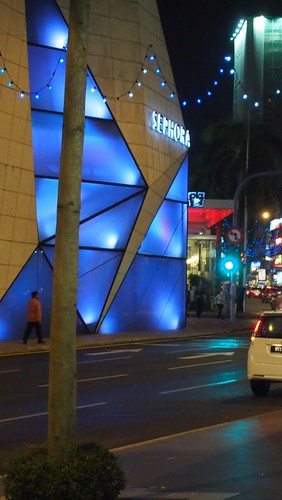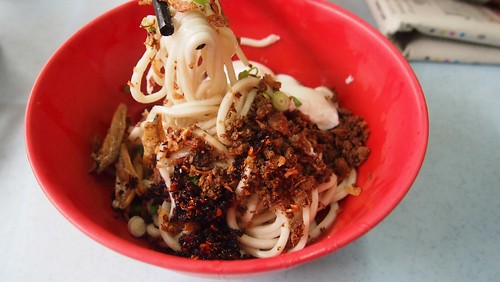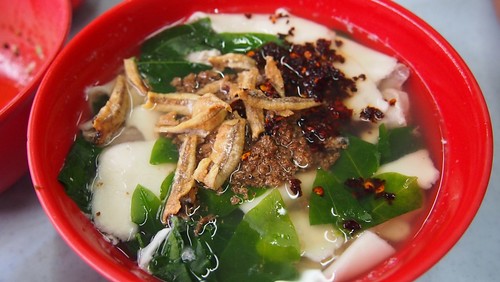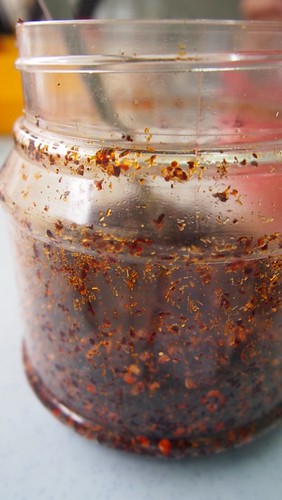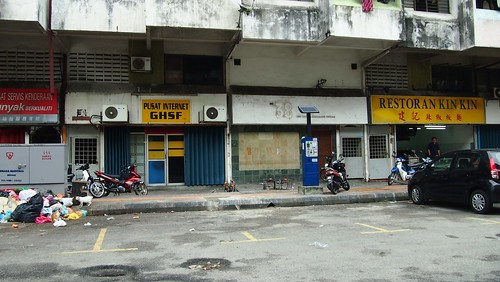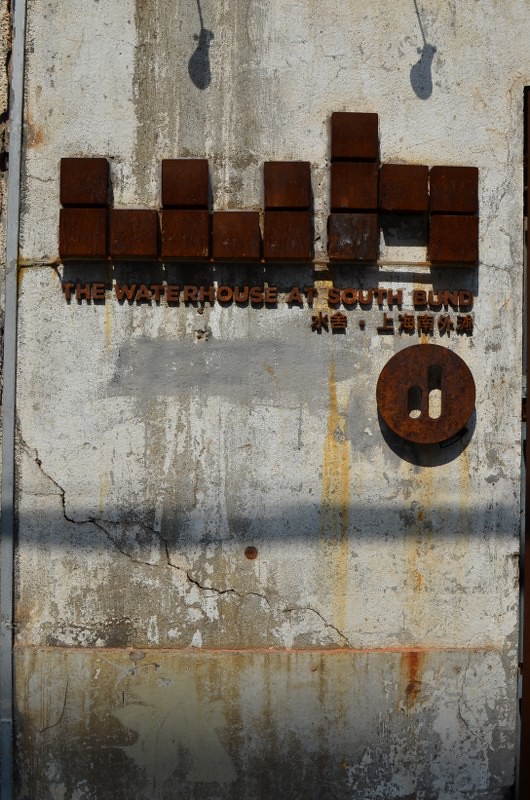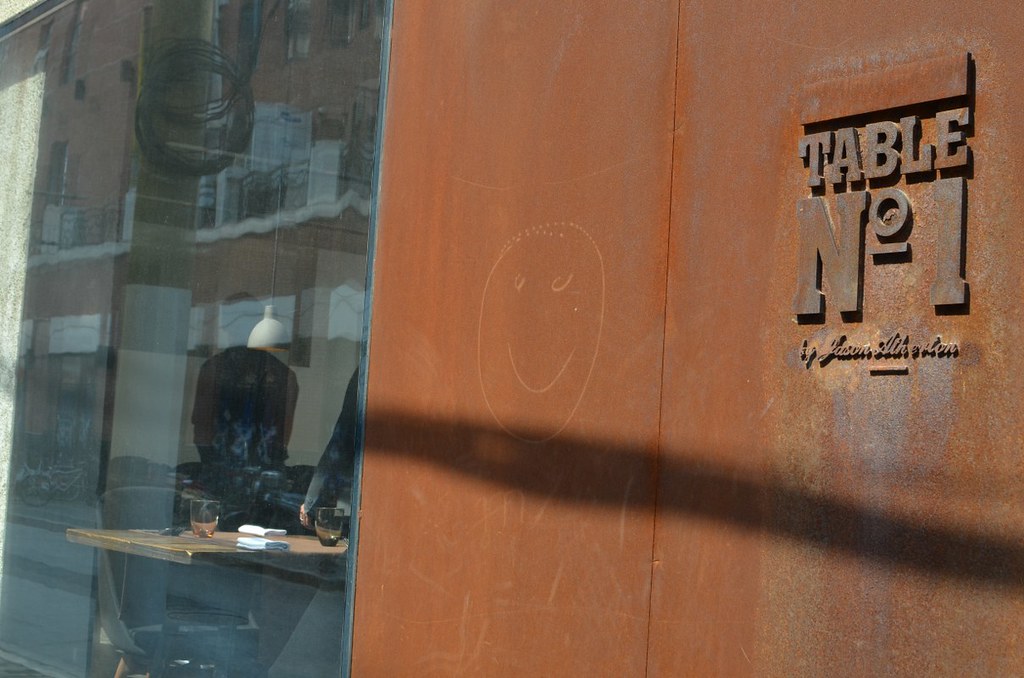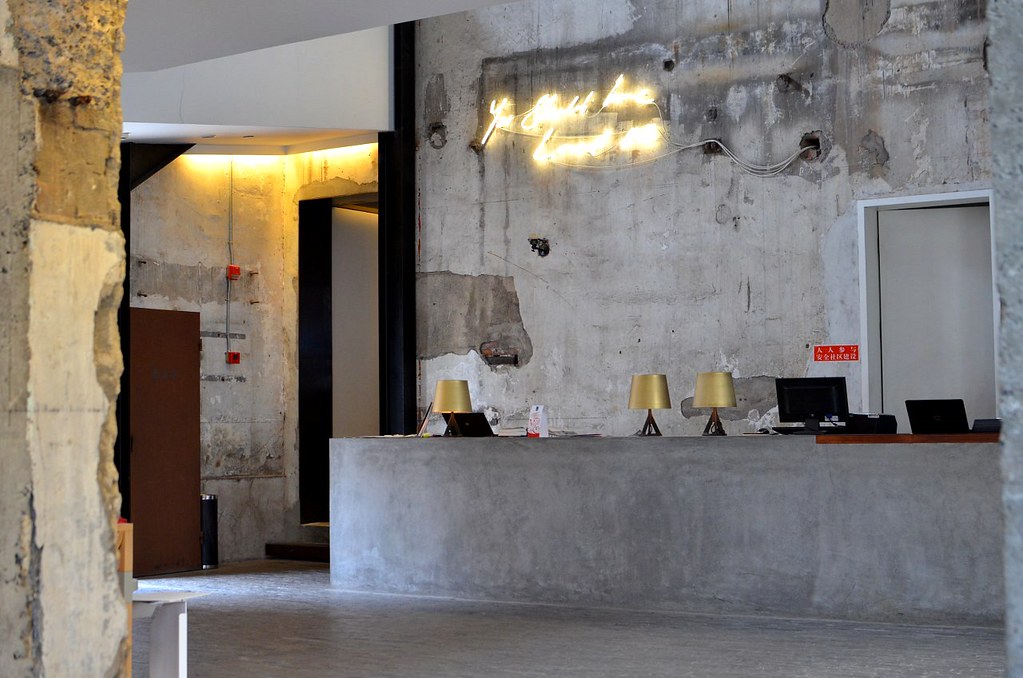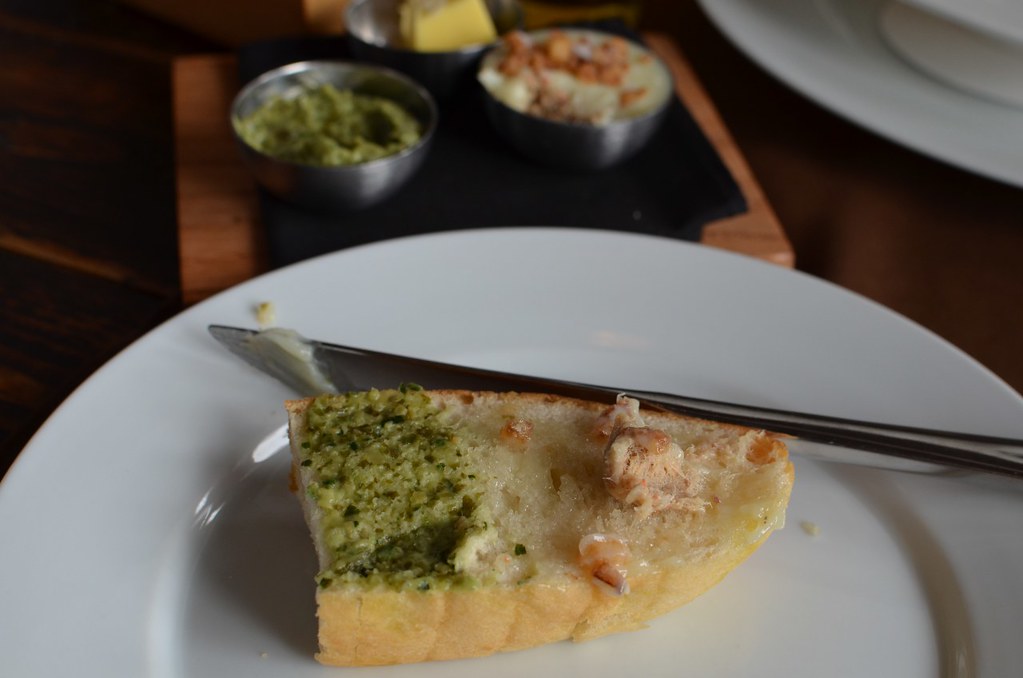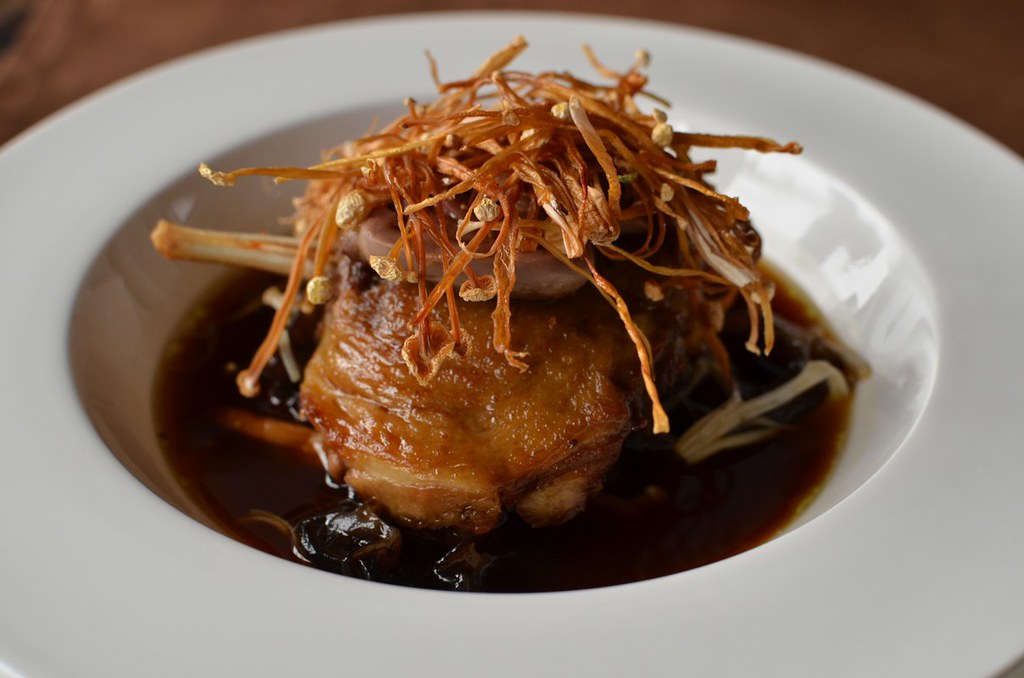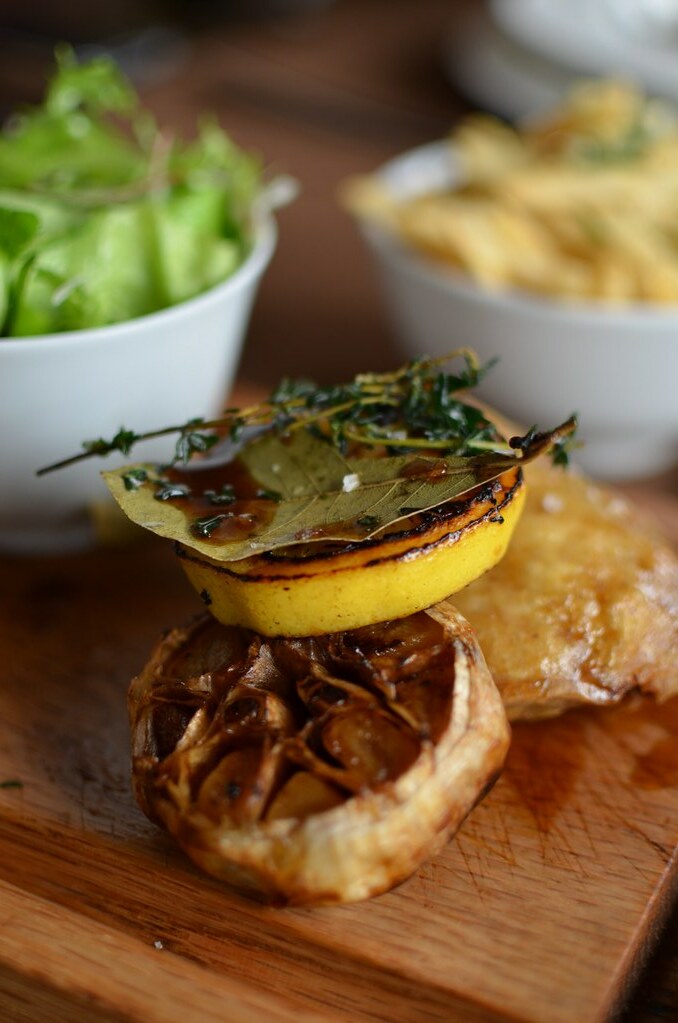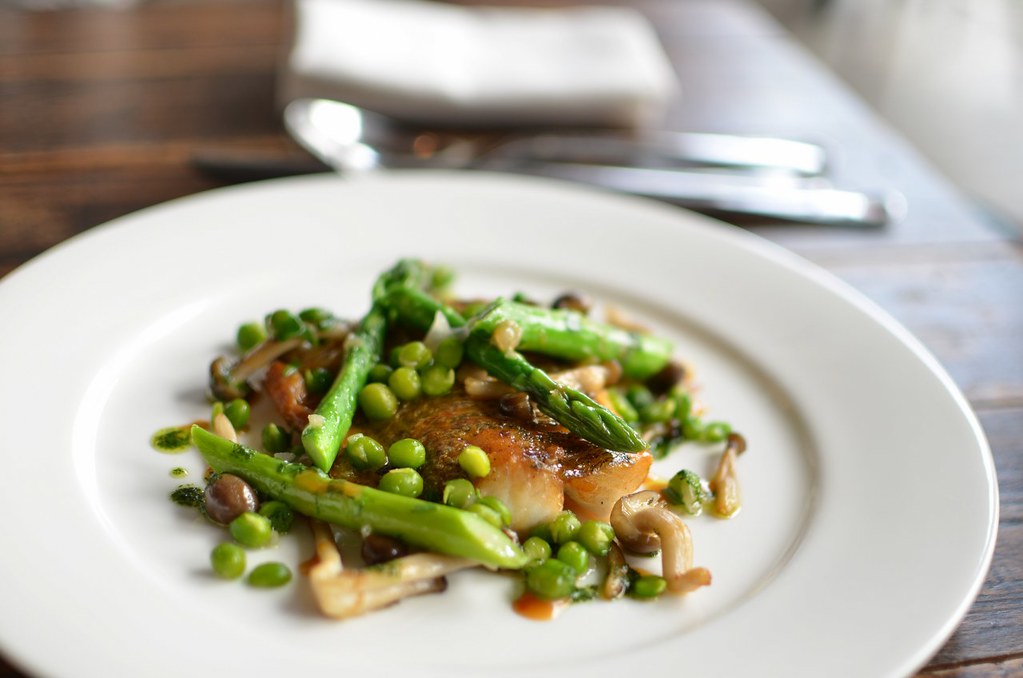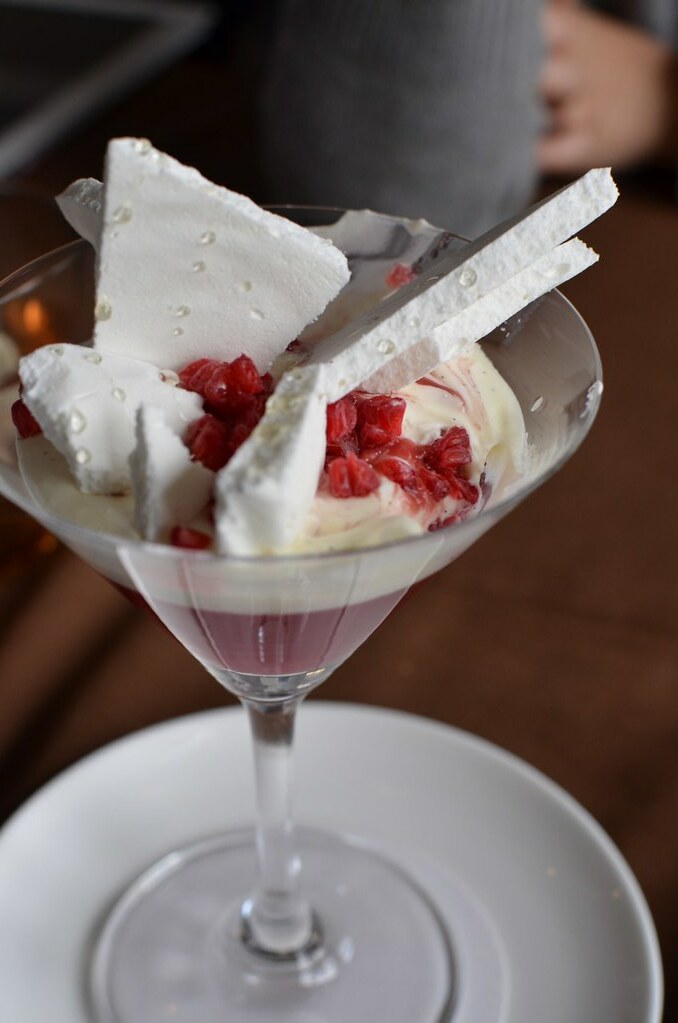
I like to collect recipes from 'real' cooks wherever I travel.
When I was in Shanghai a couple of weeks ago, I asked Ahyi, Doo Ma's maid, how to cook hong saoro. Hong sao ro means red braised meat and red braising is a basic Shanghainese way of cooking meat in soy sauce and wine for hours, resulting in the most tender, fragrant and delicious meat you have ever tasted. I have posted several hong sao recipes, among them my MIL's hong sao yuen ti (red braised pork leg) and my favourite hong sao pork cubes, a recipe that is a cross between Shanghainese and Hakka, with the addition of red onions.
Ahyi is from Hangzhou, the place where Dongpo ro originated. There are two ways to cook hong saoro, Ahyi said. The first and most common way is to fry the pork, add 'old wine', spring onions, soy sauces and simmer without the addition of water (the wine, sauces and juices from the pork should be adequate if the fire is low. My Shanghainese MIL insists on adding a bit of water though). The second way is a bit more work. The pork has first to be boiled until chopstick-tender, cut into smaller pieces and then cooked the regular way.
The first thing I cooked when I got back was hong saoro. I just had to compare the results of both methods.
Method 1:

1. Blanch cut pork pieces with boiling water. Sear the pork in a little bit of oil. You can fry them in a wok or frying pan and then transfer into a heavy based pot for braising or use the same pot but fry in batches.
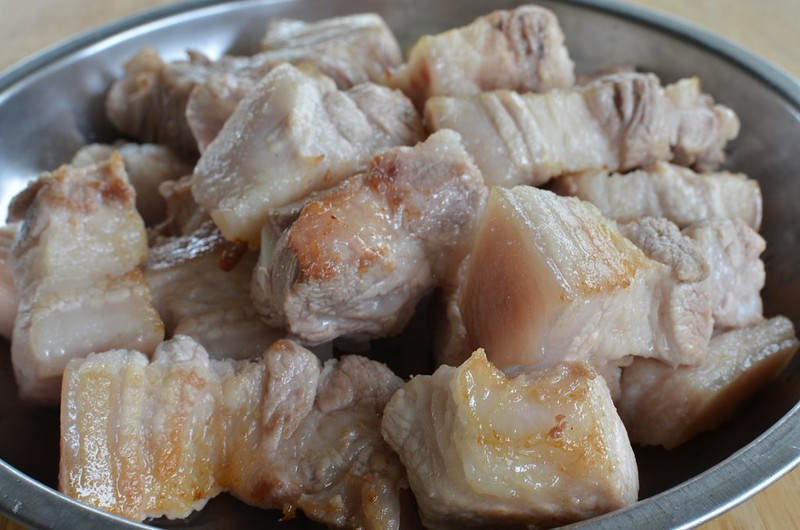

My scallions and spring onions go screaming from the garden into the pot. It's great to have some herbs growing at home so that you always have them on hand and they are fresh and free of pesticides.

2. Add the spring onions or scallions (tied in a bunch), 'old or yellow' wine such as Shaoxin Huatiao. I use 2 tablespoons per 1 kg pork. You can add some white pepper if like.
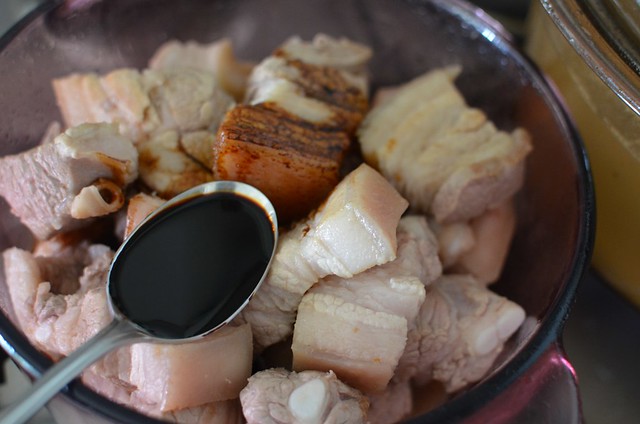
3. Add 5 tablespoons of dark soy sauce. I use Lee Kum Kee Premium Dark Soy Sauce.
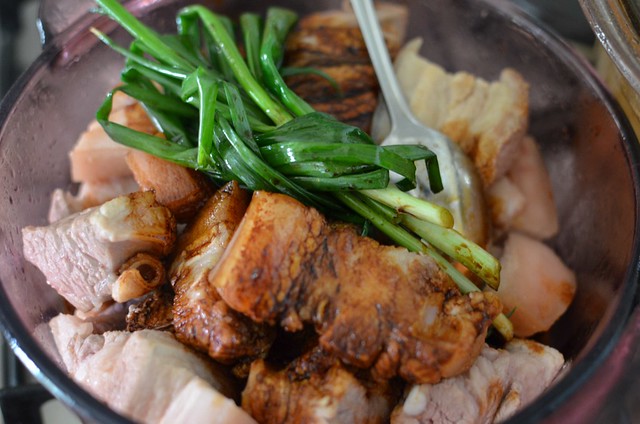
Oops. I forgot to add the spring onions earlier.
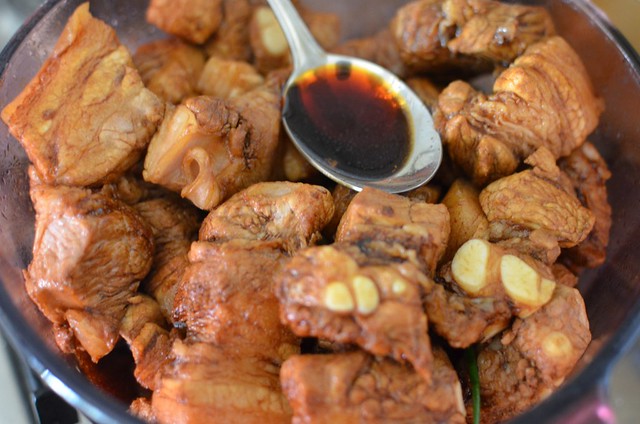
4. Add 2 tablespoons of light soy sauce. That should be enough liquid to get started. When the liquid boils, lower the heat until it just bubbles gently. Cover and simmer for 2 or more hours, depending on the size of the pork pieces. Once in a while, stir to prevent sticking to the pot. When pork is very tender, add 1 thumb-sized piece of rock sugar (no substitute for this!), stir until it's dissolved. Now turn up the fire, remove the cover, to reduce the sauce until it's thick but not too thick either or there won't be enough sauce. You'll get better with practice.
I like to rest my braised meat as I find that they taste lots better if allowed to cool and imbibe the braising flavors. To do that, when the meat is tender, add the rock sugar, stir until melted and switch off the fire. Taste and season with more light soy sauce, sugar and wine if like but remember soy sauce might not be necessary as the sauce will be saltier after reducing the liquid. Rest it for about 45 minutes, then heat it up again, taking off the cover to reduce the liquid.
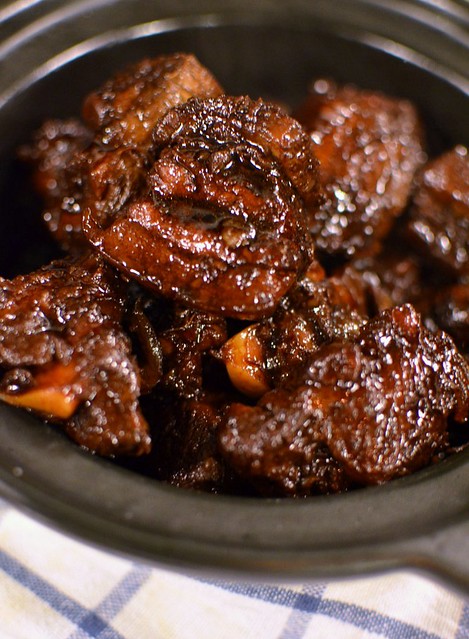
Hongsao ro, Method 1
Method 2:
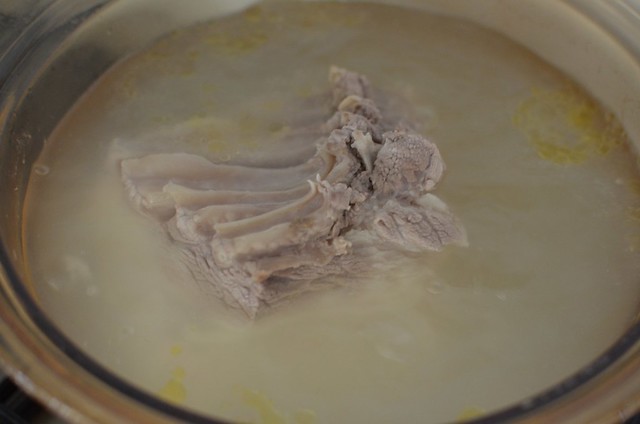
1. Blanch the slab of pork belly with boiling water before boiling it in a pot of water until it is chopstick-tender. Takes about 1 hour or more. Don't let the pork become too soft or there won't be enough time to braise the flavors into the meat later.
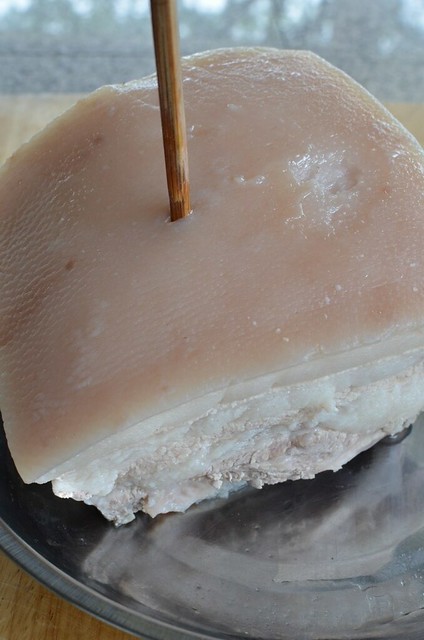
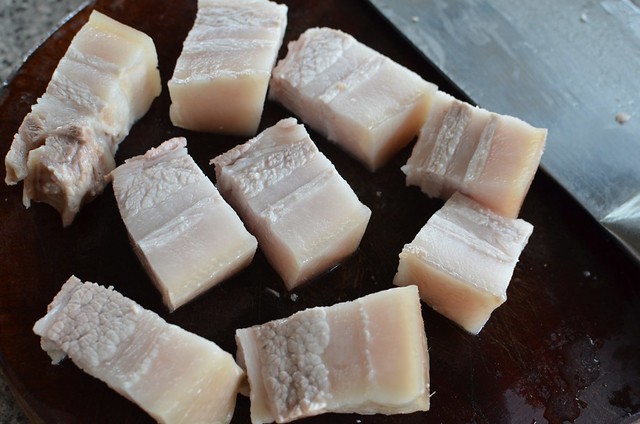
2. Cut the pork into smaller pieces.
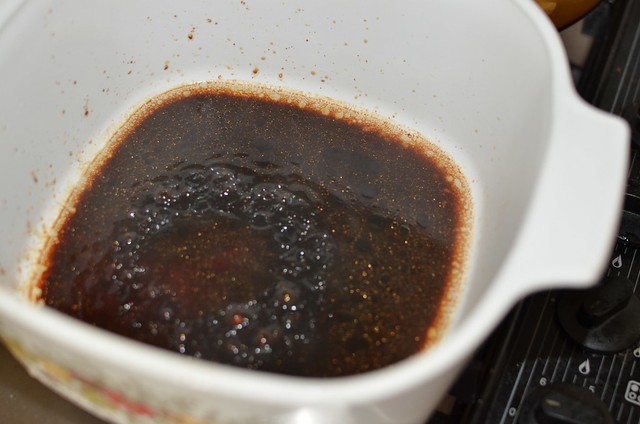
3. Put all the seasoning ingredients into a heavy based pot, including the spring onions (I forgot again) and boil 5 minutes. I used some of the liquid from Method 1 because I had added too much soy sauce and wanted to reduce the saltiness.

4. Add the boiled pork cubes and simmer, covered, until tender. Check and stir once in a while. Season with more light soy sauce, wine and sugar to taste but remember the sauce will get saltier when reduced. Again, best to rest the meat before the finishing touch.
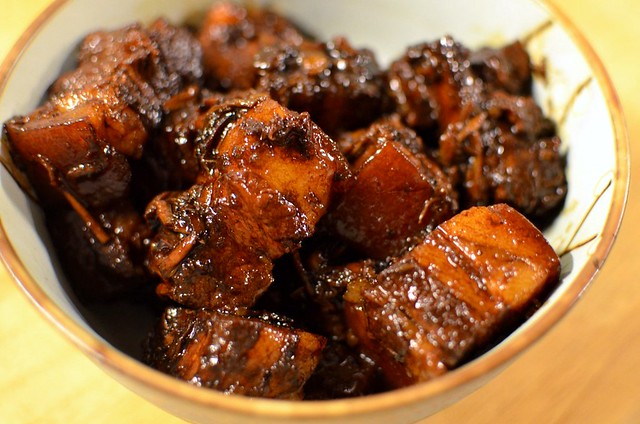
Hongsao ro, Method 2.
So, which method do you think turned out better hong saoro?
I had my in laws and a couple of visitors from SH for dinner and--surprise--they all voted for Method 2. While the taste was the same for both ro, and the fat was buttery and soft for both, the meat cooked by the first method was dry and tougher. The meat cooked by the second method was moist and tender. The pork pieces also looked neater. Plus you get a pot of pork stock. There you are, I rest my case about hong saoro.
Red braising is a skill that gets better with practice. You'll notice more innuances about red braising each time you do it. You'll learn that 1) over-stirring can cause tough meat or break it up. 2) Over-reducing the sauce can lead to tough meat 3) Using high heat dries the sauce up too quickly and also makes the meat tough.
Sometimes my hong saoro is terrific, sometimes just very good but I find that recently, my hong saoro is more terrific than very good as I cook it quite often now. Even MIL is impressed but she still snorts at my sticking to Ahyi's advice of not adding any water. p.s. If you find that your pork is not giving out enough liquid, you can add some. I think pork nowadays give out too much water because the pigs are fed with chemicals to retain water so that they weigh heavier.

